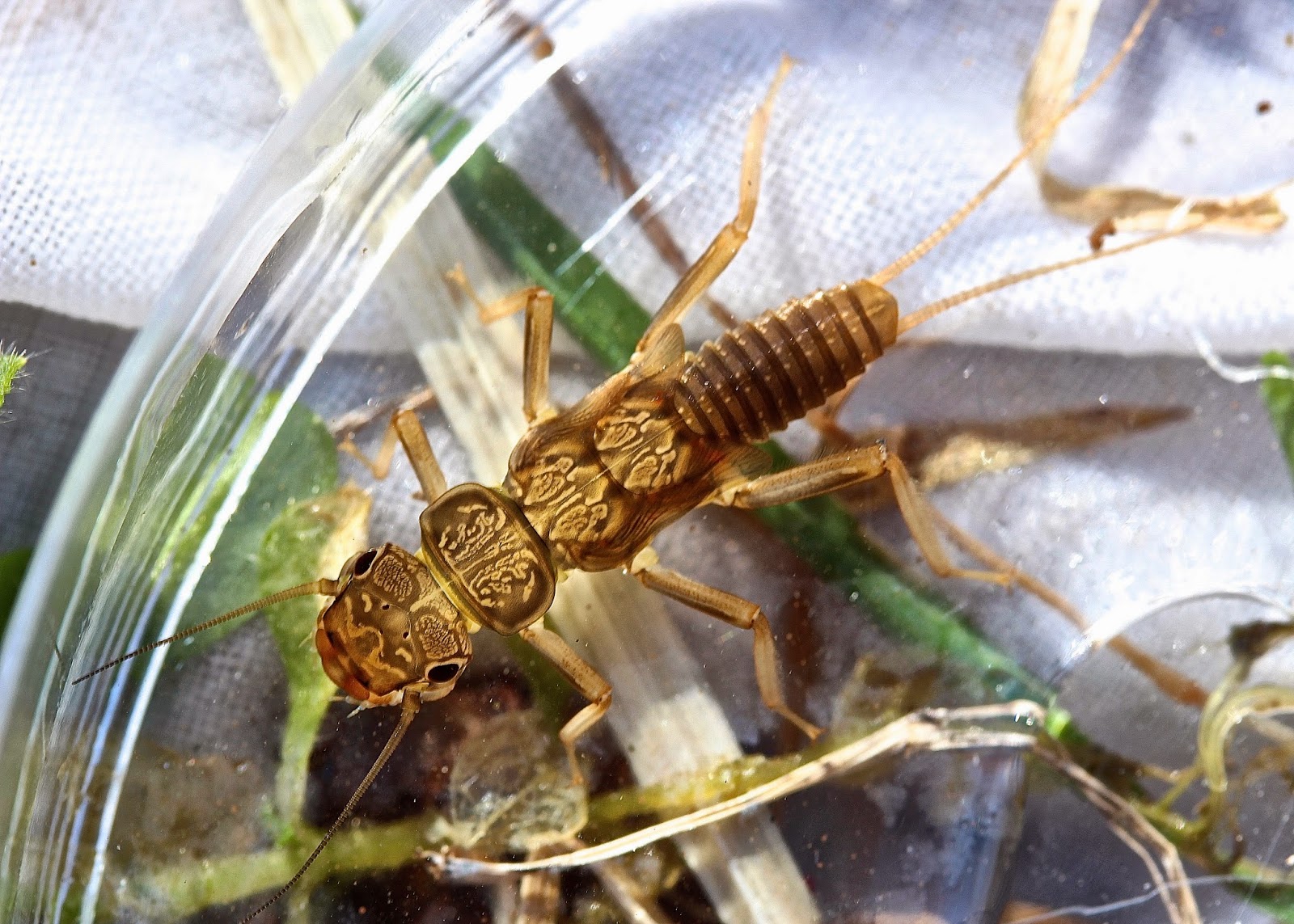In the small streams I visit in Sugar Hollow I've only ever seen one type of small minnow mayfly: Baetis tricaudatus. This beauty this morning -- a female -- was fully mature, in fact the wing pads seemed to be lifting off of the body. It's back in the stream -- though it could be airborne by now!
Baetis tricaudatus is one of the least tolerant of the small minnow mayflies with a TV of 1.5. There are two visible features that we can use for species ID. 1) Visible in the photo above -- there is a pale medial line on the abdominal segments, and 2) in the photo below -- the "middle caudal filament [tail] is less than half as long as the lateral filaments." (Beaty, "The Ephemeroptera of North Carolina," p. 6)
Like that photo. And here are some more.
________________
2. Perlodid stonefly, Malirekus hastatus. I found a lot of them, and they're getting fairly mature: note how the rear wing pads are spreading out from the body.
I thought for the longest time that these were two different species, the second being M. hastatus, but the first being Isoperla similis. The colors are different, and note how the abdomens differ in length. But I guess that's a gender -- or subspecies? -- distinction. Take a close look at the heads. On both we can see the pale interocellar area characteristic of Malirekus and the brown lines that surround the ovate occipital areas.
Having kept the second nymph in these photos (17 mm), I decided to look at the shape of the mesosternal "Y" ridge and check for the conical submental gills. Bingo! Malirekus hastatus for sure.
Differences aside, they were both beautiful insects.
________________
3. In the leaf packs there were plenty of Giant stones to be found, some very little, but some that will be hatching later this spring. Species? The usual for these little streams, Pteronarcys proteus.
This nymph was close to 2 inches long: i.e. about 50 mm.
________________
4. And then there were the caddisfly larvae. I finally found some Rhyacophilids (free-living caddisfly larva). The two I picked up were still very small. One was the quite common R. fuscula (green with the topless "H" on its head); the other appears to be another R. glaberrima (see the posting of 3/11).
This is a great stream for Rhyacophilids, and I expect to see a lot of them in April and May.
And yes, the Uenoids are still on the rocks. I picked up two. One was Neophylax mitchelli, the other, a little Neophylax aniqua. Pretty case. And the N. aniqua tubercle is visible in both of these shots.
_________________
A beautiful morning at last: warm and sunny. Just in time for the busiest time of the year in terms of the insects we find in our streams.
________________
(Oh. This, by the way, is Isoperla similis.)

















No comments:
Post a Comment